


10 Fresh Email Newsletter Prompts
March 4, 2024


Optimize Your Instagram Bio to Turn Followers into Customers
April 13, 2024Why Customer Testimonials Are as Good as Gold (and 4 Ways to Get Them)
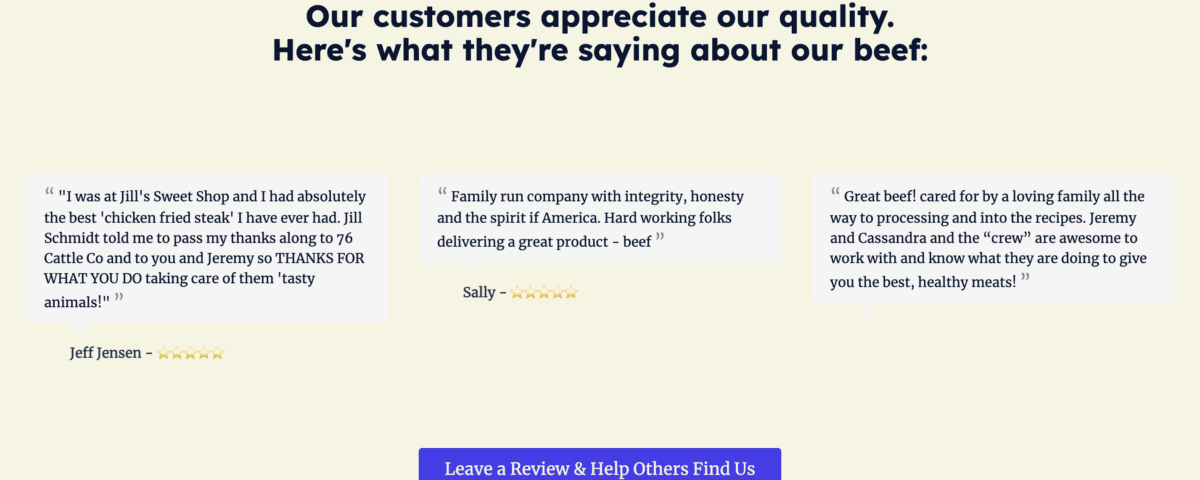

If you sell food (heck, if you sell anything), customer testimonials are gold. They’re a stamp of approval from real people, helping potential customers trust you before they buy. If you don’t have them, you need them. If you have them, they need to be updated regularly. Here’s how to collect and leverage testimonials in your marketing today.
Why Collect Customer Testimonials
- Builds Trust: Trust is everything, especially when you’re dealing with food. Customers rely on others’ experiences when deciding what to buy. A positive customer testimonial can be one of your strongest marketing tools because it comes from someone unbiased. They're real folks who tried what you offer and loved it enough to tell everyone about it.
- Enhances your Brand: Positive feedback from happy customers makes you look good. It doesn't just affirm the quality of your products; it tells a story of reliability and customer satisfaction that draws attention from a bigger audience, even those outside your target market.
- Drives Sales: Good reviews are more than just nice words; they're a powerful nudge for anyone eyeing your products who hasn't made the jump to buy. Imagine someone scrolling through your site, intrigued but not yet convinced. If they see a heartfelt review about a product they’re curious about, it's like hearing a recommendation from a trusted friend. This genuine feedback is a real-world endorsement that what you're offering is worth buying, and it can turn a maybe into a yes.
4 Ways to Collect Customer Testimonials
- In-person at Markets and Events: Talk to people! Ask for their thoughts on your products, and record what they say. (Ask permission before sharing on your website or social.) Display a flier at your table with a QR code directing visitors to your Google My Business page. Offer an incentive for them to leave a review.
- Online Surveys and Feedback Forms: After customers make a purchase, send them a digital survey via email or directly on your website. Ask questions like [TBD sample questions from a feedback form].
- Social Media: The next time you post, ask your customers to share their experiences. Repost customer stories and reviews. Re-sharing not only shows real people enjoying your products; it’s content you don’t have to think about or create.
- Offer Rewards: Offering a small discount or free sample as a thank you for leaving a review can motivate customers to share their experiences. This method also encourages purchases and can help customers try something new that they’ll possibly love.
Navigating Negative Reviews
Nobody likes them, but everybody gets a few. Here's how to deal with negative reviews:
-
Respond Promptly and Professionally: Quick responses show that you value customer feedback and proactively resolve issues. A professional tone helps maintain your brand’s integrity, even in the face of criticism.
- Acknowledge and Apologize: Recognize the customer's experience and apologize for any inconvenience or disappointment they may have faced. You don’t have to admit fault, but show empathy and understanding.
- Offer a Solution: Whenever possible, provide a concrete solution to the problem or offer compensation, such as a refund, replacement, or discount on future purchases. This demonstrates your commitment to customer satisfaction.
- Take the Conversation Offline: For complex issues, invite the customer to continue the conversation through a private channel like email or phone. This allows for a more personal resolution and prevents the situation from escalating publicly.
- Learn and Improve: Use negative feedback as a learning tool. Identify any recurring issues or valid points raised in reviews and consider how you can make changes or improvements.
- Follow Up: If the issue is resolved, follow up with the customer to ensure they’re happy with the outcome. This can sometimes turn a dissatisfied customer into a loyal advocate for your brand.
How and Where to Use Customer Testimonials in Your Marketing
Select the most striking testimonials to feature. UX/UI designer Erik Kennedy suggests using clips that are superlative (“the best,” “the tastiest”) or transformative (“before, X, now, Y”). You can shorten a customer testimonial without asking permission, but if you need to edit for clarity or impact, send the revised quote to the customer for approval before posting. Pair the testimonial with the customer’s name and, if possible, a photo for an extra layer of authenticity and relatability.
Website and Online Store: Feature testimonials prominently on your site, especially on the homepage and product pages. This immediate social proof can influence visitors to make a purchase.
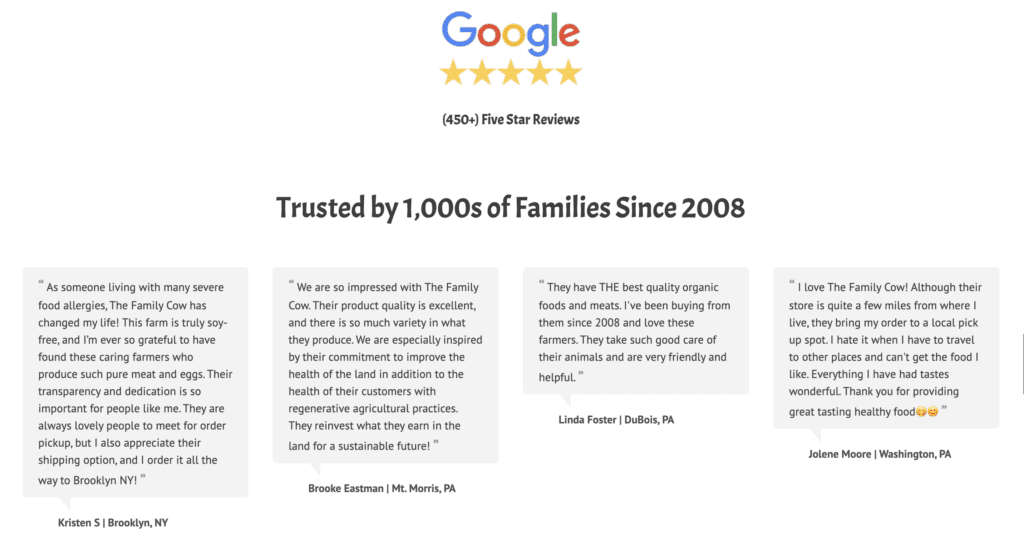

Customer reviews on The Family Cow’s website
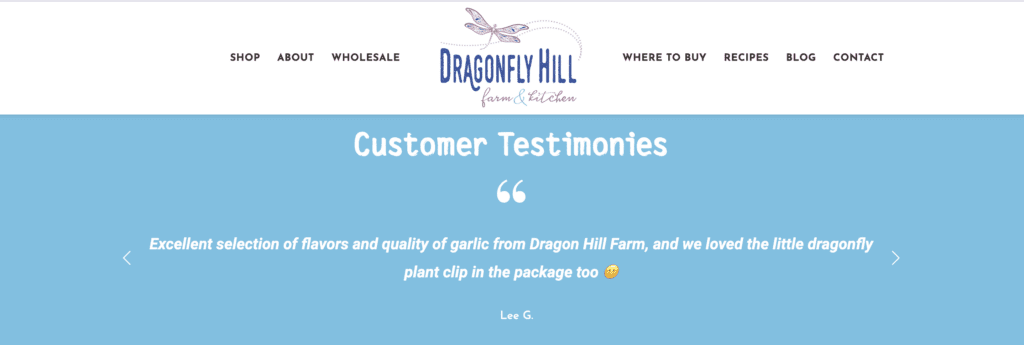

Customer testimonials on Dragonfly Hill Farm & Kitchen’s website
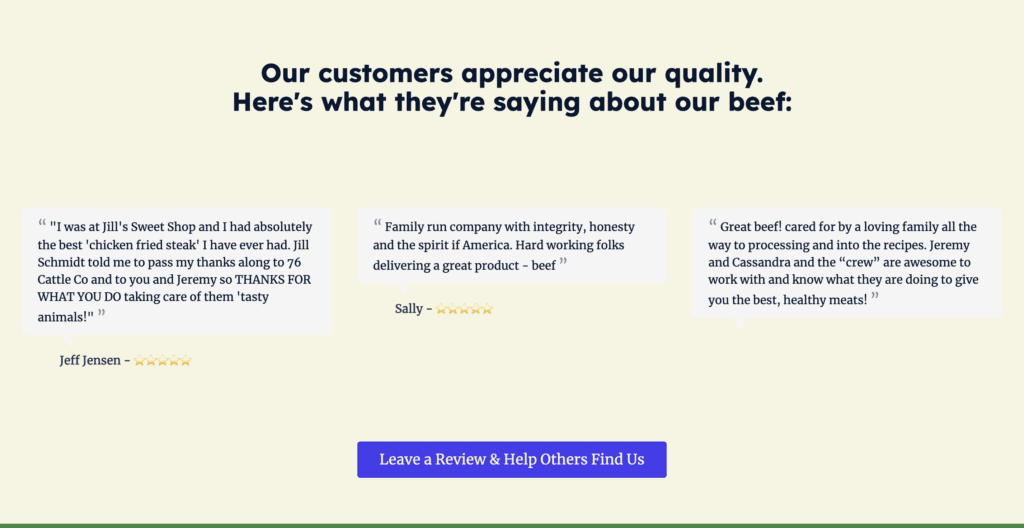

Customer reviews on 76 Cattle Company’s website
Social Media Stories and Posts: Regularly share testimonials on your social media channels. This not only helps fill your content calendar but also keeps your brand credibility front and center.
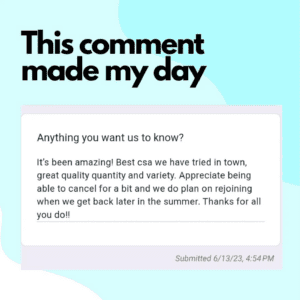

Customer feedback on VRDNT Farm’s Instagram
Email Marketing: Include customer testimonials in your newsletters or emails. It’ll make them more persuasive and fun to read.
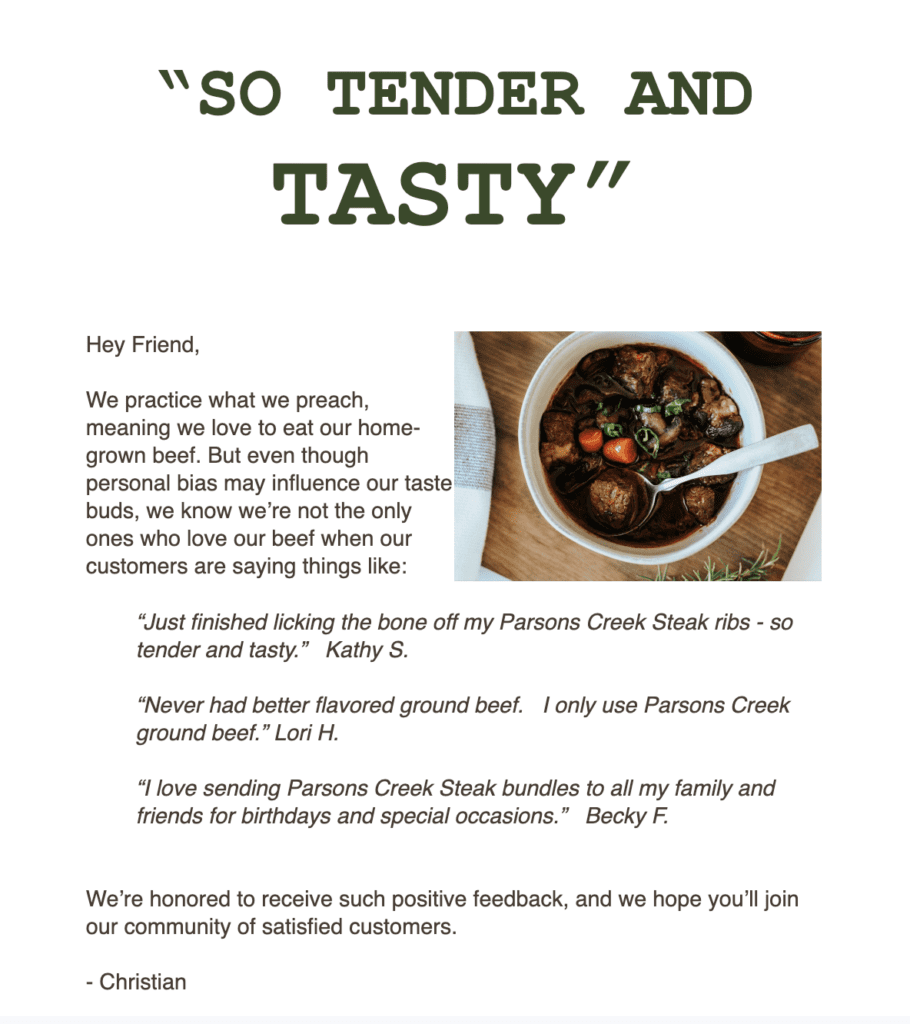

Customer quotes in a Parsons Creek Steak email
Packaging and Collateral: Print testimonials on your product packaging or marketing materials. This can catch the eye of potential customers and provide instant reassurance of the product's quality.
Testimonials: A Must-Have
In short, customer testimonials are a marketing secret weapon. They offer authentic, relatable proof of how awesome your products are, and they can significantly enhance your credibility, image, and, ultimately, sales. It’s never too late to start collecting testimonials and weaving them into your marketing strategy to move your business forward.

